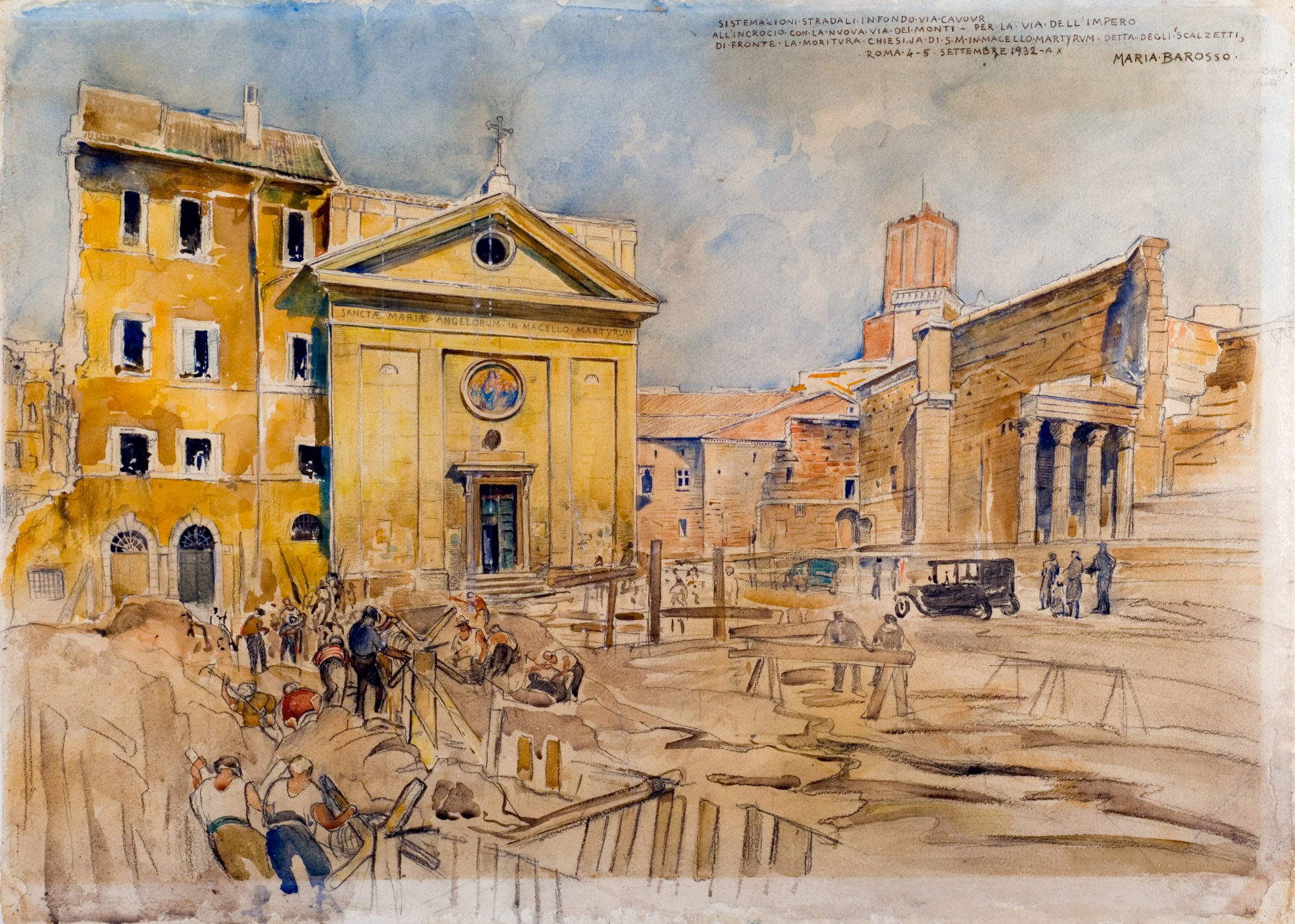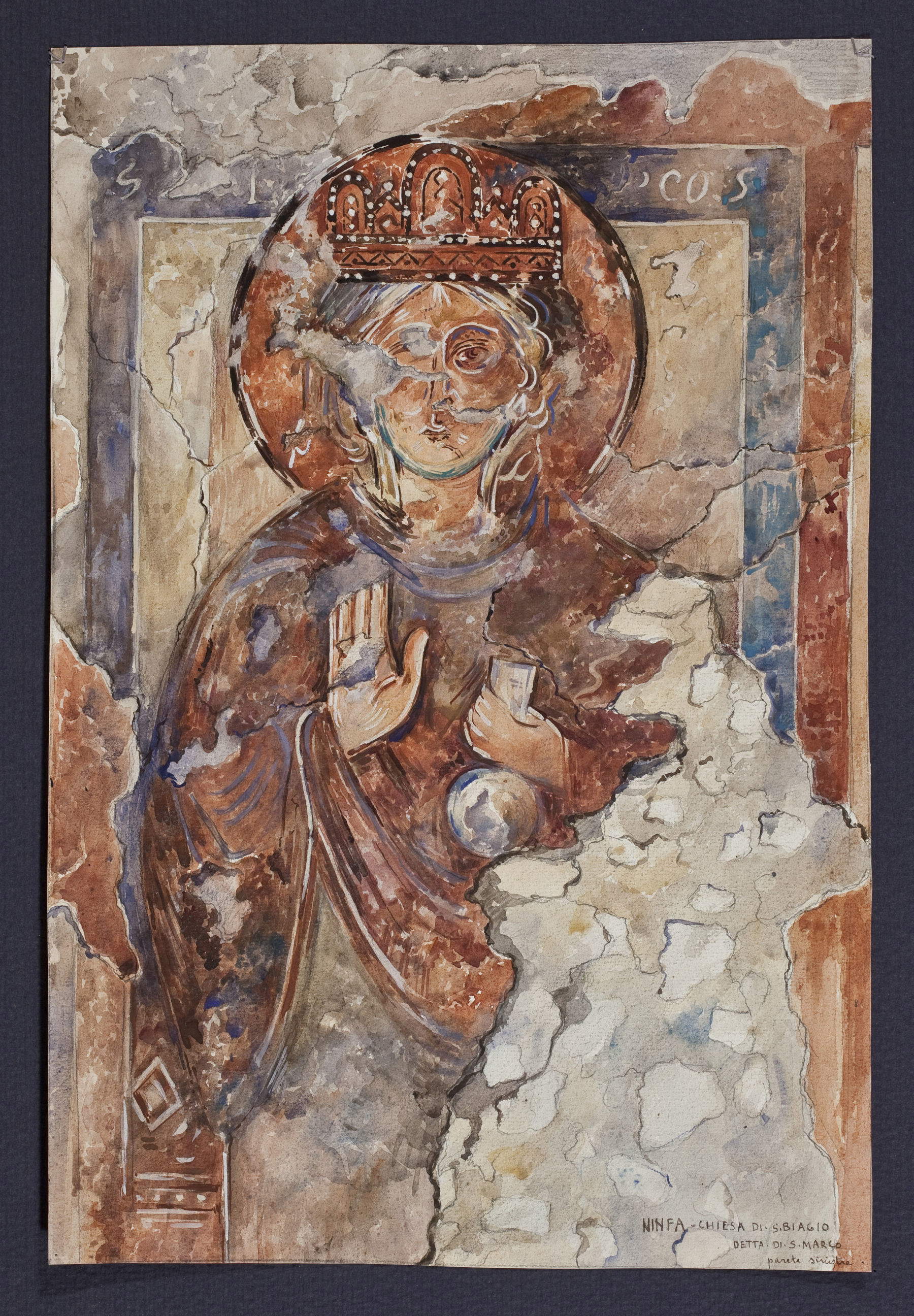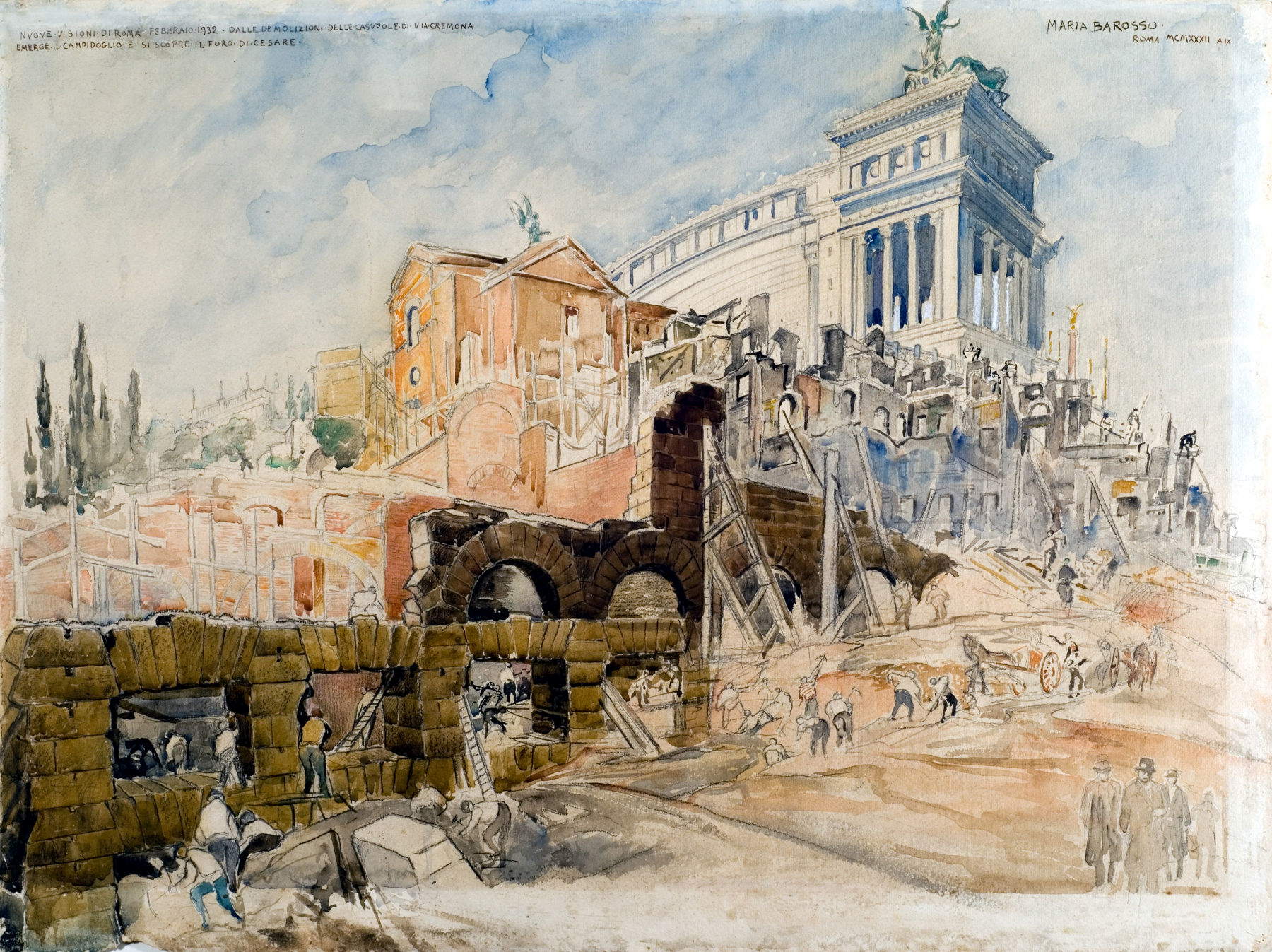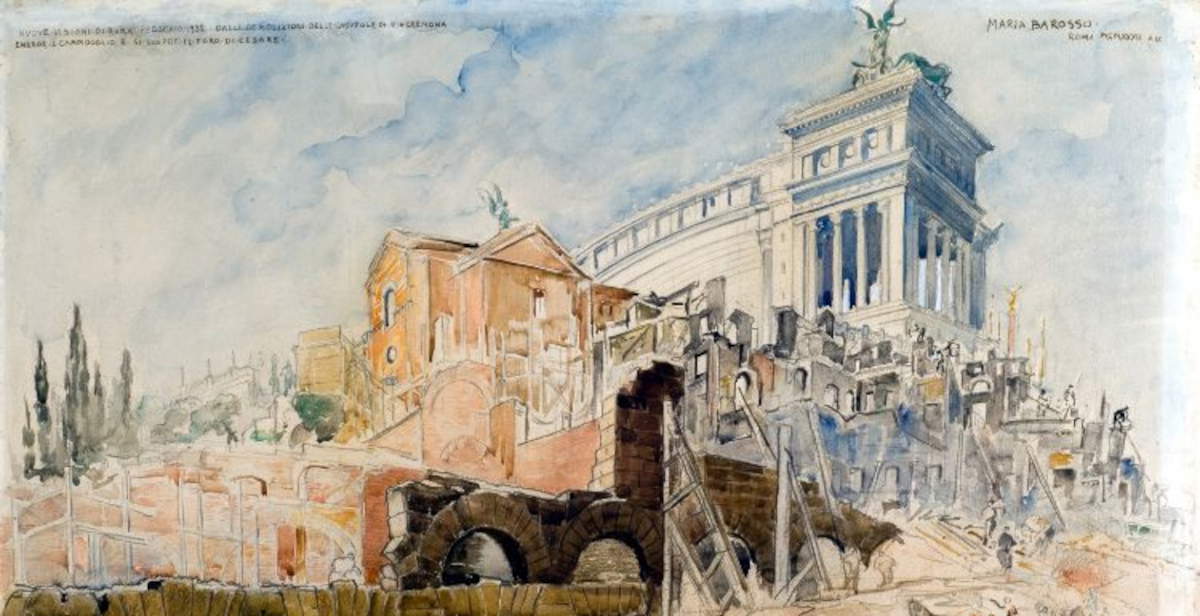From Oct. 17, 2025, to Feb. 22, 2026, the Capitoline Museums, Centrale Montemartini (Rome), will host the first monographic exhibition dedicated to Maria Barosso (1879-1960), a key figure in the cultural landscape of early 20th century Italy. A painter and archaeologist, Barosso was the protagonist of an activity that combined scientific precision and artistic sensitivity, becoming a witness to the profound urban transformations of the Capital. The exhibition, titled Maria Barosso, Artist and Archaeologist in Transforming Rome, brings to light a little-known but highly significant profile. It is organized by Zètema Progetto Cultura, while the catalog is published by De Luca Editori d’Arte. The curatorial committee includes Angela Maria D’Amelio, Maurizio Ficari, Manuela Gianandrea, Ilaria Miarelli Mariani and Domenico Palombi, with the collaboration of Andrea Grazian and Eleonora Tosti. Through watercolors, drawings and color reproductions made for the Soprintendenza di Roma e del Lazio, Barosso documented demolitions, construction sites and archaeological discoveries that irreversibly marked the face of the city. Barosso was the first woman to hold the position of official at the General Directorate of Antiquities and Fine Arts in Rome, where she arrived in 1905 and began working with Giacomo Boni, then director of excavations at the Roman Forum. Her career led her to observe and record, with a gaze that was both technical and poetic, the processes that modified the urban landscape during the opening decades of the century and in the Fascist period.
The exhibition is promoted by Roma Capitale, Assessorato alla Cultura - Sovrintendenza Capitolina ai Beni Culturali, and is realized in collaboration with Sapienza University of Rome. The exhibition project consists of 137 works, including about 100 prints, drawings, watercolors and paintings made by Barosso. Many works come from the deposits of the Capitoline Superintendency, particularly from the Museum of Rome at Palazzo Braschi, and are joined by loans from private collections and institutions such as the Historical Archives of the National Roman Museum at Palazzo Altemps, the Colosseum Archaeological Park, the Vicariate of Rome and the Camillo Caetani Foundation.


The installation takes the visitor on a tour divided into sections that correspond to the places of the transforming Rome portrayed by the artist. The first room presents Barosso’s personal and professional milestones, and then leads to the analysis of works that recount the years of major urban interventions. His works allow us to reconstruct radical demolitions, unexpected archaeological discoveries and scenic interventions desired by the fascist regime. The plates are documents that preserve the memory of a city that, within a few decades, changed physiognomy by sacrificing neighborhoods, religious buildings and historic palaces to open monumental spaces and new streets. Prominent among the places recounted are the Basilica of Maxentius and the area of Largo Argentina, where Barosso immortalized the excavation of the Velia, a hillock that united Palatine and Esquiline. Its elimination, desired to allow the construction of the Via dell’Impero, now the Via dei Fori Imperiali, was celebrated as a work of engineering comparable to those of antiquity. The artist’s watercolor documentations show the scale of that intervention and the irreversible loss it entailed.
The sacred area of largo Argentina is another crucial passage. Here, among the rubble, emerged the four republican temples and the Curia of Pompey, a site linked to the assassination of Julius Caesar. Barosso captured its stages of discovery and returned with his drawings the moment of an unexpected revelation. Likewise, he recorded the demolition of medieval houses and churches along the new Via del Mare, which isolated the temples of the Foro Boario and Foro Olitorio, transforming them into monumental scenery. Alongside well-known episodes, the exhibition also recalls lesser-known but no less emblematic cases. Among them is the Compitum Acilium, a small sanctuary dedicated to the Lari found during the earthworks of the Velia in 1932. Destroyed by the speed of construction, the monument survives today thanks to the representations of Barosso, who fixed its forms and proportions with accuracy and sensitivity.

These works make it possible to preserve the memory of an otherwise lost find. The itinerary expands to include reproductions of frescoes and mosaics placed in various Roman churches, which underwent restoration in the same years. Engraving production and that intended for private commissions is also presented, as well as collaborations with national and international institutions that testify to the artist’s versatility. The concluding section places Barosso’s works alongside a group of paintings by contemporary artists such as Mario Mafai, EvaQuagliotto and Tina Tommasini. Their canvases document the same season of transformations, offering different interpretations of a city suspended between memory and modernity.
Among the most relevant works in the exhibition are watercolors and drawings from the Caetani Foundation, depicting the frescoes of the churches of San Biagio, Santa Maria Maggiore and the Grotto of St. Michael the Archangel in Ninfa. The latter is presented alongside the fragment of the fresco now preserved at the Caetani Castle in Sermoneta, creating a direct dialogue between the drawing and the surviving material. No less significant are the sheets executed during the collaboration with Giacomo Boni, now owned by the Colosseum Archaeological Park, and the large drawing of the frescoes of the Loggia of the Priory of Rhodes, from the archives of the Capitoline Superintendence and never exhibited until now. In addition to the exhibition itinerary, the exhibition offers a program of meetings and guided tours with curators and scholars. The initiatives allow for an in-depth study of the figure of Maria Barosso, her contribution and the historical context in which she worked. The aim is to present the public with an opportunity to reflect on the processes of transformation of the city and the role of artistic documentation in the preservation of memory.
 |
| Maria Barosso, archaeologist and painter witnesses Rome in transformation |
Warning: the translation into English of the original Italian article was created using automatic tools. We undertake to review all articles, but we do not guarantee the total absence of inaccuracies in the translation due to the program. You can find the original by clicking on the ITA button. If you find any mistake,please contact us.